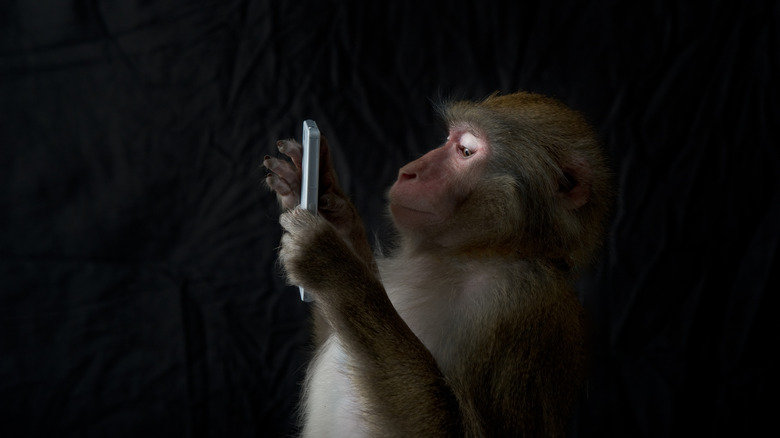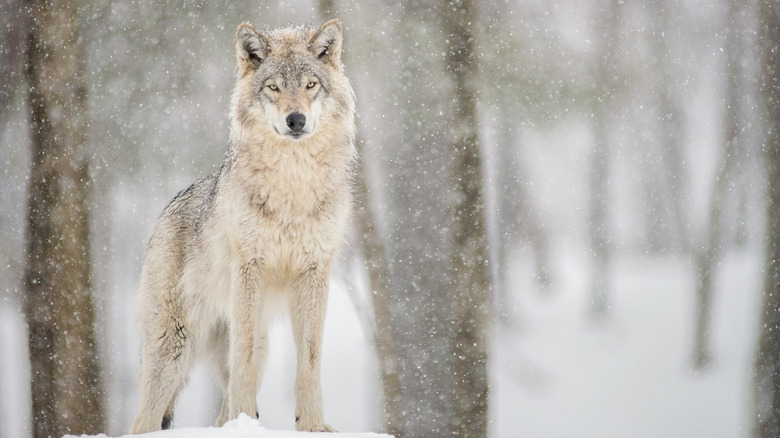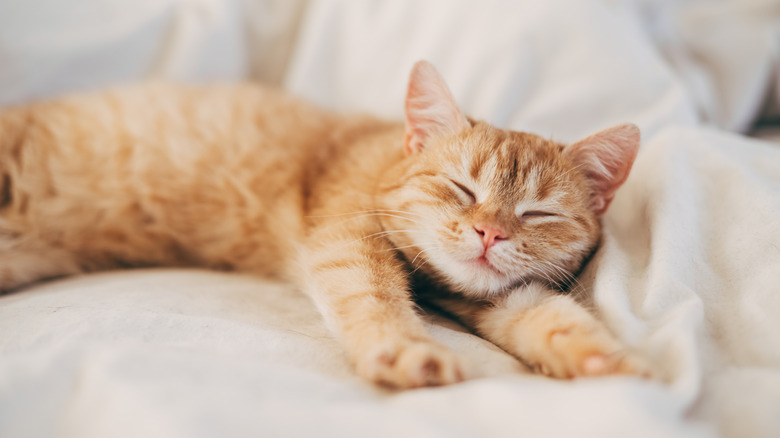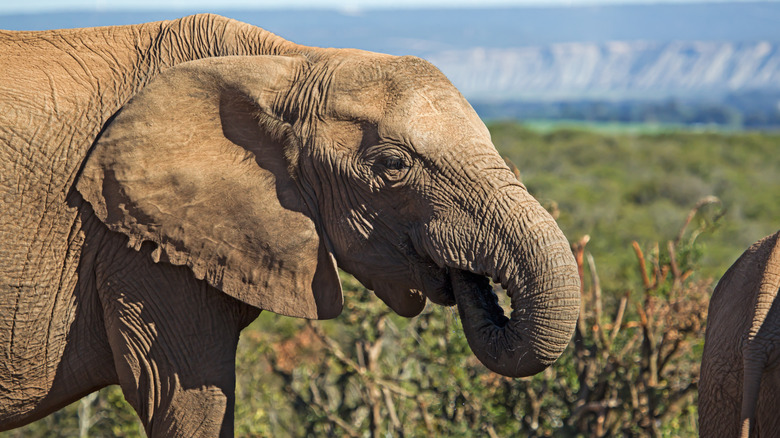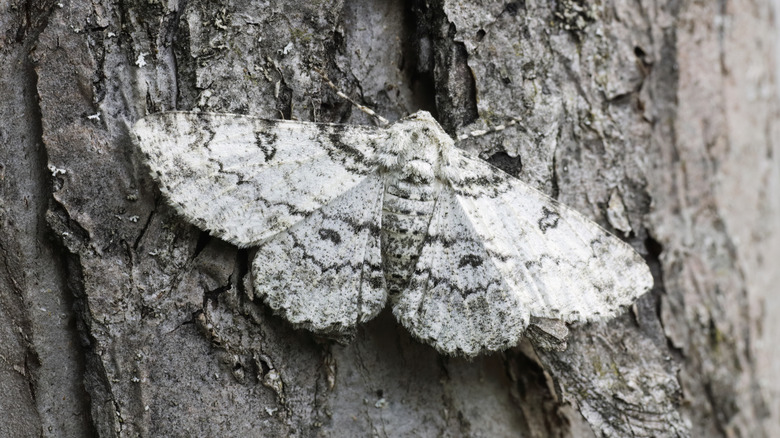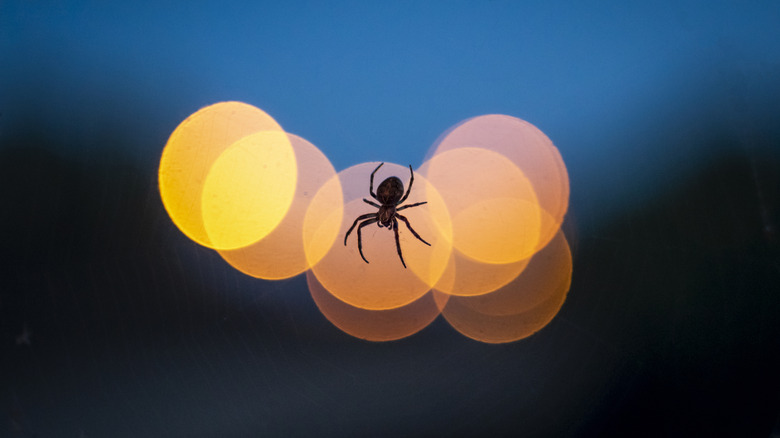Times Humans Changed The Evolution Of Animals
Evolution is often perceived as an incredibly slow, natural process driven by environmental pressures over millennia. That characterization certainly holds true, but humans have also repeatedly altered the history of life on Earth, sometimes intentionally, other times inadvertently. And while our species exists within and as a part of the natural world, it's easy to see why we might think of our actions as "unnatural" or otherwise distinct from those outside our influence. That myth deserves dispelling, though, as our impact is a reality that the extinction of the Dodo bird and plenty of other species will attest to.
One of the most notable examples of this is the domestication of dogs. Genetic evidence suggests that dogs diverged from wolves sometime between 27,000 and 40,000 years ago, leading to the vast array of breeds we see today. Cats similarly began their domestication journey relatively recently, around 9,000 to 10,000 years ago.
And while those stories are fascinating, they are far from the only examples of humanity's influence on animals' evolutionary trajectories. Whether by design or not, we've shaped how insects utilize color to better camouflage against human-altered ecosystems, directly impacted the number of tusk-bearing elephants in the wild, and more. The case of each species reveals much about humanity's impact on the "natural" world — for better and for worse. Here are some of the most compelling and intriguing examples of when humans changed the evolution of animals.
How humans accidentally domesticated dogs
Perhaps the most classic and well-understood example of humanity's influence on animal histories is the dog. That doesn't make the story any less compelling or its results any less, well, adorable. While the precise timeline remains up for debate, genetic studies tell us that dogs broke off from their wolf ancestors a maximum of 40,000 years ago. Evidence of the oldest known dog burial from 14,200 years ago indicates that they were well-established as human pets by then, suggesting an even deeper shared history.
But how and why did it happen? The short answer is that we aren't sure. But a 2021 study published in Scientific Reports suggests that meat may have been the key accidental factor to tip the scales in the direction of domestication. To understand this, a research team led by Maria Lahtinen from the Finnish Food Authority calculated just how much lean meat would have been available during our planet's last glacial maximum, which occurred some 14,000 to 29,000 years ago. This timeline aligns nicely with that of dog domestication.
Their findings support the idea that there would have been an abundance of prey species that both humans and wolves would have been hunting on the European continent. With humans unable to rapidly eat it all, wolves would have been drawn to the surplus, and the humans could have shared it with them to no detriment of their own caloric stockpiles. Taking in wolf cubs as pets would have been likely, but domestication wouldn't have occurred unless this surplus continued for generations. The paper's authors propose that Eurasian late-Pleistocene hunter-gatherers met these conditions, slowly turning the wolves into partners in hunting and protection from other predators.
The animal that tamed themselves
Unlike dogs, which were actively domesticated through human intervention, cats essentially domesticated themselves (which is a very cat thing to do). In a 2017 study published in Nature Ecology & Evolution, researchers surveyed DNA lineages from over 200 cats over the last several millennia. They found that cat genes have remained essentially unchanged from their wildcat ancestors, with one notable exception. The paper's authors also show that, despite cat domestication taking place along two lineages, all domestic cats of today share a common ancestor in the African wildcat, Felis silvestris lybica.
Domestication likely began in the Neolithic period in the Fertile Crescent, with today's cat ancestors living close to agricultural communities in this region roughly 8,000 years ago. Here, they developed a kind of symbiotic relationship with humans, acting as rodent control by clearing fields of rats and other critters drawn to the crop stores. "This is probably how the first encounter between humans and cats occurred," study co-author Claudio Ottoni told National Geographic. "It's not that humans took some cats and put them inside cages."
And that notable exception to domestic cats' genetic makeup compared to their wildcat ancestors? That would be the tabby cat's stripes and spots, the gene for which emerged in domesticated cats sometime during the Ottoman Empire's rule in southwestern Anatolia, later spreading to Europe and Africa. So, the next time your feline friend can't decide whether or not they want to come inside or stay out in the garden, just remember that aloof independence is the very reason we can enjoy our purring companions today.
The regrettable rise of the tuskless elephants
File this one under "more than a little bit depressing." Humans aren't always domesticating animals in a harmonious, win-win relationship. For centuries, elephants have been targeted for their ivory tusks, but this history of human hunting has had an odd (and perhaps foreseeable) evolutionary consequence: an increasing number of elephants are now being born without tusks. This phenomenon has been particularly evident in Mozambique's Gorongosa National Park, where decades of poaching during the country's civil war (which raged from 1977 to 1992) led to the majority of the elephant population getting wiped off the map.
Poachers disproportionately killed tusked elephants for food and to sell their ivory to finance war efforts, leaving behind tuskless individuals that then passed their genes to future generations. When the war ended, the offspring of the remaining females in the population were an interesting mixed bag: roughly half were tuskless, up from a prevalence of just 18.5%, according to a 2021 paper published in the journal Science. The decades of war and poaching had "changed the trajectory of evolution in that population," evolutionary biologist Shane Campbell-Staton told NPR about the war's effects.
The episode represented a massive shift in these elephants' evolutionary journey in an extremely short time frame. And while the tuskless elephants are at a reduced risk from future poaching efforts, what they've lost is worth considering. Tusks serve important functions for elephants, helping them strip bark for food and dig for water. While the tuskless elephants of Mozambique and other parts of Africa can, and indeed appear to be, living healthy lives, losing their tusks will inevitably change how they live, which could have downstream repercussions on the ecosystems they are a part of.
Moths, Manchester, and the Industrial Revolution
Mammals aren't the only animals that humans have changed the evolutionary path of. One of the most interesting examples of this is the Biston betularia — the peppered moth. Before the Industrial Revolution, the majority of peppered moths in England had light-colored wings speckled with dark spots, an adaptation that allowed them to blend in with the lichen-covered tree bark of their native habitats.
But in 1848, the English naturalist R.S. Edleston caught the first-recorded, almost entirely black peppered moth in Manchester, a rarity at the time. These were not nearly as common as their predominantly white brethren, as the black moths' increased contrast on trees made them easy pickings for predators. But in the next half-century, as coal fires in urban areas both killed off the lichens that grew on trees and blackened building walls, people began to notice that black peppered moths were more common than in the countryside. The environmental pressure on their coloration had flipped, and black was in vogue for any peppered moth looking to survive its new surroundings. By 1900, dark moths comprised as much as 98% of the peppered moth population in the cities where they lived.
While the pressures of selective predation are indeed the main factor behind the moths' change in appearance, recent research also indicates that unstudied migration rates or other non-visual pressures may have also played a role. Regardless, the moth remains a poster child for how rapidly a species can change due to human activity.
Caught in urbanization's web
Some of the most interesting evolution is happening right under humanity's noses in our densest urban centers. The bridge spider (Larinioides sclopetarius) is a living example of this. Typically nocturnal and wary of light, these spiders have begun to defy expectations by spinning their webs directly beneath city lights. The reason? Artificial lighting attracts an abundance of insect prey, effectively making bridges and street lamps prime real estate for web building.
Australian arachnologist Astrid Heiling first documented this phenomenon in the 1990s, noting that bridge spiders had seemingly evolved a preference for artificial light, even while avoiding daylight and remaining nocturnal. But this change has prompted an evolutionary response from their prey. In a 2016 paper published in the journal Biology Letters, Swiss entomologists Florian Altermatt and Dieter Ebert noticed that the small ermine moth (Yponomeuta cagnagella) had developed reduced "flight-to-light" behavior in urban environments with long-term light pollution. Essentially, they found that the evolutionary pressures put on these moths by the bridge spiders' new behavior meant that the population that survives is increasingly made up of moths that can override their instinct to fly toward artificial light sources — one evolutionary chess move resulting in another.
This urban arms race highlights how city life is rapidly reshaping evolution. It's unclear what adaptations for which species will develop in the future, but for now, plenty of animal species are working their way into brand new ecological niches courtesy of human impact on the planet. Just be glad they're not evolving into anything resembling the fossilized spider from Australia that's pure nightmare fuel.
